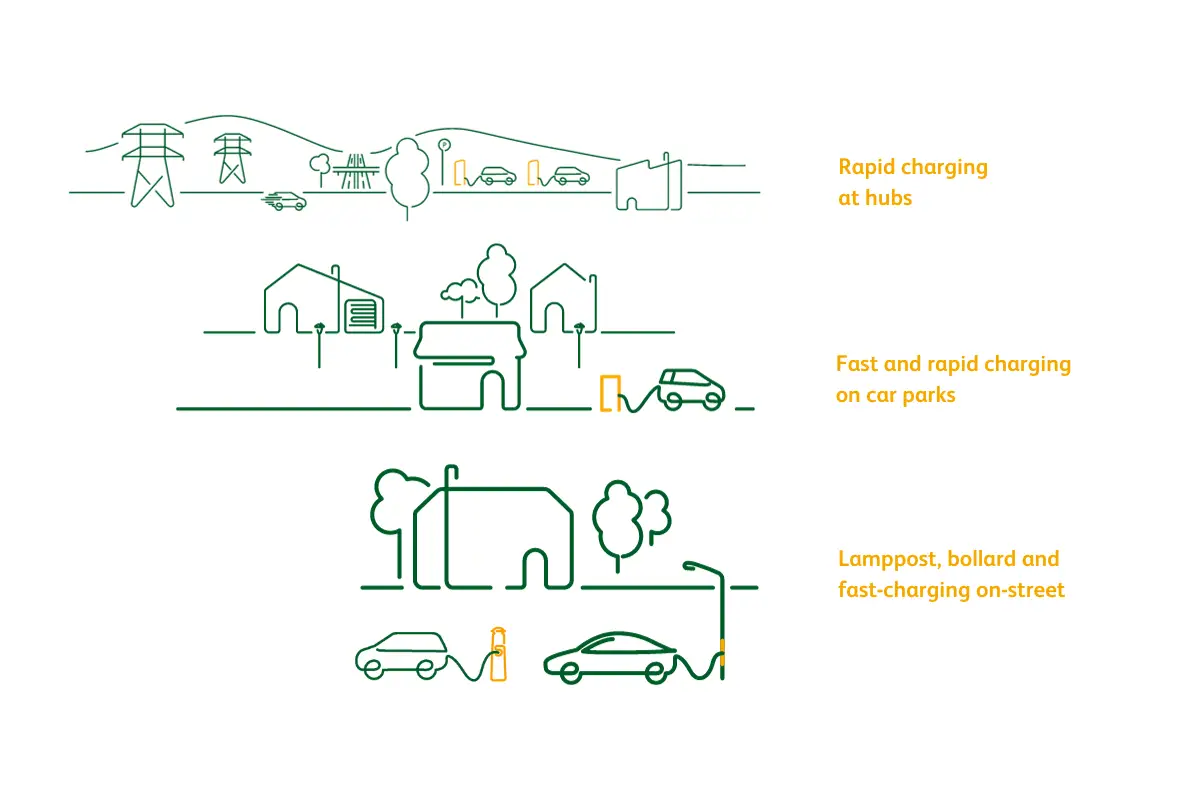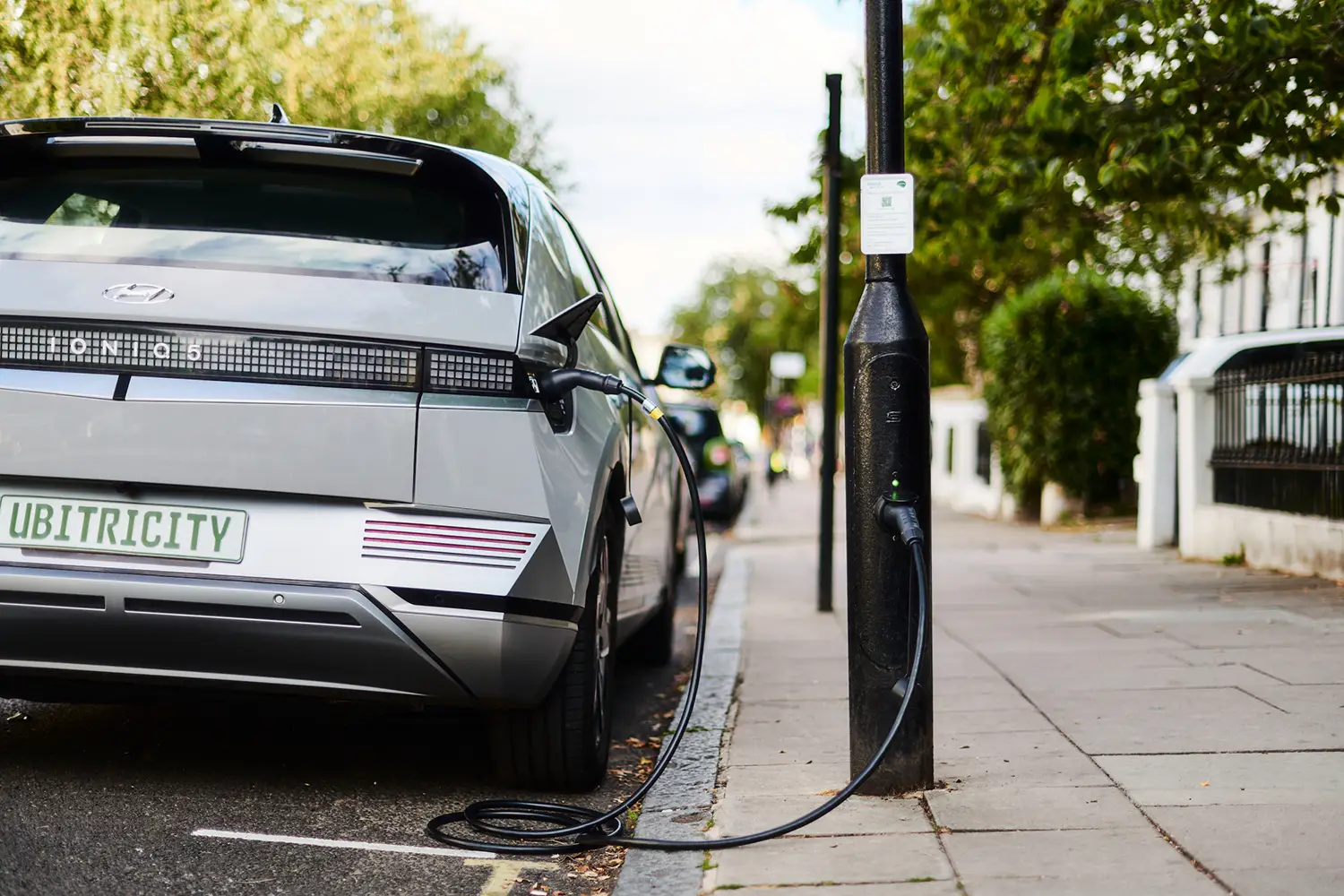Local authorities that are planning the development of public charging infrastructure are often faced with the dilemma of which type of charging point they should opt for (lamppost, fast, rapid, hub). The answer is simple: all of them. EV charging is worlds apart from traditional petrol and diesel refuelling. Only a combination of fast, rapid and lamppost charge points can meet the multiple needs of EV drivers. This combination is called the “EV charging mix”.
Practical example: A day with Emily
Let’s take a look at a day in the life of the fictitious EV driver Emily. She lives in a row of terraced houses in the middle of the city. She has been driving an EV for a year, but does not have her own parking space. Like an estimated 8 million homes in the UK, Emily has to depend on public charging facilities to charge her car.
In the morning, Emily drives to work. Her company offers parking spaces with EV charging options. When she gets to work, Emily plugs in and charges her car whilst she works. Emily is lucky, not every company has recognised the relevance of installing EV charge points or has parking options.
Around 4:00 p.m., Emily leaves work and decides to nip to the shops. The supermarket car park has parking spaces with fast-charging options, but they are few and far between. Emily can’t find a free charging spot. But that doesn’t matter, because her battery level is still relatively high from charging at work.
The right charging solution for every use case
After shopping, Emily drives to the gym. Here, she discovers a rapid in the parking lot. However, rapid charging would be more expensive for Emily. Since she has nearly completed her day, she decides to wait until she gets home, where she can use a cheaper charging option. On a weekend trip, she would benefit from these charging stations along the way, as she could recharge in a short amount of time.
In the evening, Emily parks on the street in front of her house and uses the Shell Recharge App to charge at one of ubitricity’s lamppost charge points overnight. The charge point is conveniently in front of her house. It charges more slowly than a fast charge point, but that doesn’t matter to Emily as the battery will be fully charged by the time she wakes up.
The mix makes the difference
We have seen from Emily’s daily routine that due to the time it takes to charge an EV, there need to be multiple options available to recharge for EV drivers. The most important factors to take into account when planning your EV infrastructure expansion are:
- Idle times – is the charger suitable to the amount of time a resident will be parked there?
- Costs – will charging be too expensive for the end user?
Emily’s example shows that faster charging is not always better. A demand-driven mix of different charging options orientated towards the wishes and needs of EV drivers is a much better option.

Why is public residential charging so important?
When considering charging an electric car, you may immediately think of a car charging in a garage or private driveway. But an estimated 8 million UK homes do not have a private parking space available. These EV owners park their cars at the side of the road or in public car parks. Without providing convenient charge points for these homes, a huge numbers of residents are at risk of being left behind in the transition to EV.
The average car will spend the majority of its time parked. Most cars are normally parked for around 23 hours a day. In front of the workplace, in front of the supermarket, in the parking garage, in front of our friends’ homes or even our own place of residence, cars are parked, often with long dwell times. These areas with long dwell times make the perfect spaces for users to charge.
This is where lamppost charging comes in. Quick and easy to install on residential streets, lamppost charging offers several advantages. The low voltage energy supply extends the life of the car battery, they can quickly and cheaply be rolled out en masse, and most importantly they provide easy and convenient charging close to resident homes.
To sum up
EV charging is worlds apart from traditional petrol and diesel car refuelling. To provide charging infrastructure to convert and maintain residents onto EV vehicles, an EV charging mix of fast, rapid and lamppost charge points is needed to meet the multiple needs of EV drivers.
Interested in talking about your EV strategy? Get in touch with one of our expert team today.

